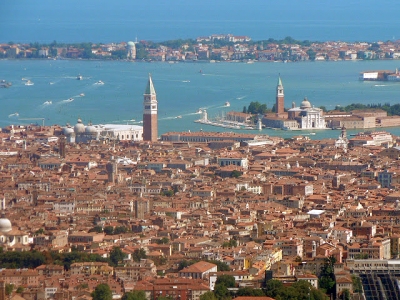
OECD Report 2010

This Review of Venice, Italy, offers a comprehensive assessment of the city-region’s economy and the extent to which its land use, labour market and environmental policies embrace a metropolitan vision.
A new understanding of the provinces of Padua, Treviso and Venice as an interconnected city-region of 2.6 million people guides this study. Venice ranks as among the most dynamic and productive city-regions in the OECD, with high employment levels and growth rates.
Though it has thrived on a model of small firms and industrial clusters, it is undergoing a deep economic transformation. Venice confronts growing environmental challenges as a result of rising traffic congestion and costly infrastructure pressures, exacerbated by sprawl. Demographics are also changing, due to ageing inhabitants, immigrant settlement and the rapid depopulation of the historic city of Venice.
Metropolitan economic trends are reviewed and benchmarked, including GDP per capita, labour productivity growth, participation rates, patenting, employment and unemployment rates.
Labour markets seem to work at least as effectively as the average metro-region in the OECD. Employment rates are close to the average and close to performance in Brussels, Vienna or Seoul.
In contrast, as the figure below demonstrates, unemployment rates are among the lowest in OECD metro-regions. Venice’s unemployment rate is lower than richer regions such as San Diego, Melbourne, Phoenix, Tokyo or Washington DC.
Key facts
- The Venice city-region is one of the largest economies in Italy: it includes 2.6 million inhabitants and accounted for 5% of the national value added in 2005. The city-region encompasses the Provinces of Venice, Padua, and Treviso along with the Venice Lagoon and its archipelago of 117 islands.
- One of the most visited areas in the world and export-oriented manufacturing: 39.5 million visits per year and it accounts for 23% of all national exports and over 40% of Italian luxury goods sold abroad.
- It is a successful OECD metropolitan region. High productivity rate, GDP per capita close to the average of OECD metropolitan regions, and low official unemployment rate (3.5% in 2008)
- Low scores on innovation indicators: low share of the population of 25 years and older with a university degree (9.5%), low R&D expenditures (0.72% of GDP in 2003 vs. 1.97% EU average).
Key policy issues
- How to increase innovative capacity to catalyse Venice’s economic transformation
- Enhance labour market inclusion for immigrants, women, and older workers (aged 55-64)
- Tackle climate change and flooding risks.
- Stimulate connectivity to create synergies in a poly-centric system.
Recommendations
- Boost innovation by developing links between universities and firms, business development for SMEs and improving business environment (improving tax collection, reducing court backlogs)
- Expand labour market integration programmes for women, older workers, and immigrants, by providing continuous training and job placement services
- Promote high density development, by reduction of land consumption and more transit-oriented development
- Integrate land use and water planning
- Increase vertical co-ordination within the Venice city-region, especially through co-ordinated land use planning.
- Extend horizontal co-operation, through pilot-projects in tourism, inter-city flagship projects, metropolitan climate change strategies, the creation of a metropolitan transit authority and the preparation for a debate on more radical governance options (such as a metropolitan city or “città metropolitana”).

